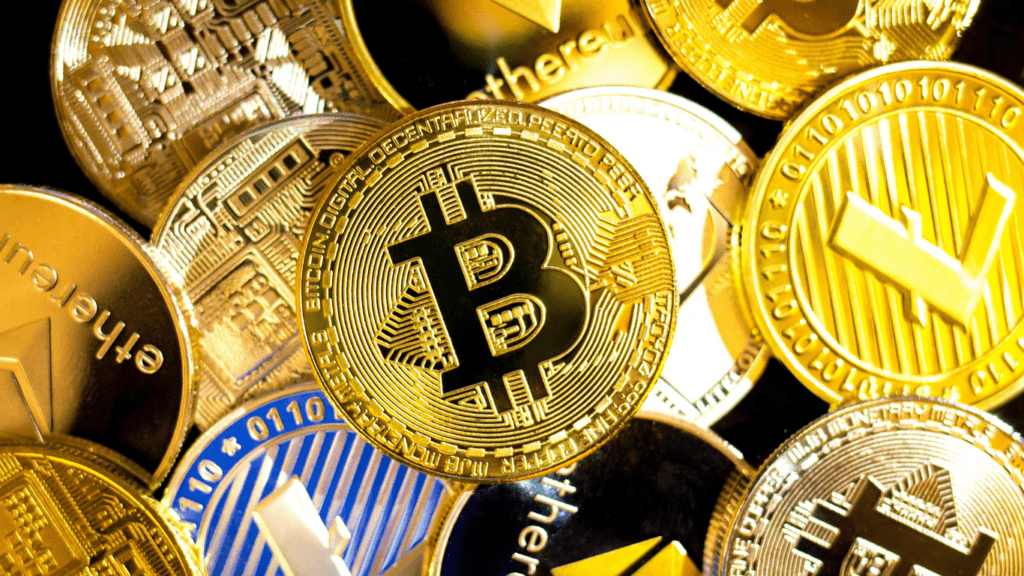In the fast-evolving world of cryptocurrency, securing your digital assets is paramount. As an avid investor in the digital currency space, I understand the importance of safeguarding my crypto holdings from potential threats.
In this article, I’ll delve into the security risks associated with crypto wallets and provide valuable insights on how to fortify your defenses to protect your investments. With the rising popularity of cryptocurrencies, the risks of cyber threats, hacks, and scams targeting crypto wallets have also escalated.
As I navigate the intricate landscape of digital currencies, I’ve encountered various security challenges that every crypto investor should be aware of. By implementing robust security measures and staying informed about the latest security trends, you can mitigate the risks and ensure the safety of your crypto assets.
Join me as I explore the world of crypto security, unravel the common vulnerabilities in crypto wallets, and equip you with practical tips to enhance the security of your digital assets. Let’s empower ourselves with knowledge and proactive steps to safeguard our crypto investments effectively.
Understanding Security Risks in Crypto Wallets
As an experienced investor, I understand the significance of safeguarding digital assets in the ever-evolving cryptocurrency landscape. Let’s delve into the types of security risks associated with crypto wallets to better protect our investments.
- Phishing Attacks: These deceptive attempts trick users into revealing sensitive information by posing as legitimate entities. For instance, fraudsters may create fake websites or emails resembling popular crypto exchanges to obtain login credentials.
- Malware and Ransomware: Malicious software can compromise the security of crypto wallets. Ransomware encrypts data, demanding a ransom for decryption, while malware can steal private keys or login details, granting unauthorized access to wallets.
- Insufficiently Secured Private Keys: Weak private keys or storing them online make wallets vulnerable to hacking. An exposed private key can lead to unauthorized transactions and the loss of digital assets.
- Physical Theft: Despite the digital nature of cryptocurrencies, physical theft remains a concern. Careless handling of hardware wallets or disclosing recovery phrases can result in asset loss.
- Exchange Hacks: Centralized exchanges are frequent targets for cyberattacks. In the event of an exchange breach, users’ funds stored in hot wallets are at risk of being stolen.
- Human Error: Mistakes such as sending funds to the wrong address or falling for social engineering tactics can jeopardize the security of crypto wallets.
Understanding these security risks enables us to proactively protect our crypto assets from potential threats and safeguard our investments.
Best Practices for Securing Your Crypto Assets
When it comes to safeguarding your crypto assets, following best practices is crucial. Let’s explore key strategies to enhance the security of your digital holdings.
Choosing a Secure Wallet
Selecting a secure wallet is the first step in protecting your crypto assets. Opt for reputable wallets with a track record of robust security features. Consider hardware wallets like Ledger or Trezor for added protection against online threats.
Implementing Two-Factor Authentication
Enhance the security of your crypto wallet by enabling two-factor authentication (2FA). By requiring a second form of verification, such as a code from a mobile device, 2FA adds an extra layer of defense against unauthorized access.
Backing Up Your Wallet
Backing up your wallet is essential to prevent the loss of your crypto assets in the event of theft, device failure, or other unforeseen circumstances. Store your backup in a secure location, preferably offline or in a secure cloud storage service.
Keeping Your Recovery Phrase Secure
Your recovery phrase is a vital aspect of wallet security. Treat it with the utmost care and never share it with anyone. Store it in a secure place away from prying eyes, ensuring that only you have access to it when needed to recover your wallet.
By following these best practices, you can significantly enhance the security of your crypto assets and mitigate the risks associated with holding digital currencies.
Monitoring Your Crypto Wallet Regularly
As an experienced crypto investor, I recognize the importance of regularly monitoring my crypto wallet to ensure the safety of my digital assets. Regular monitoring is essential to detect any suspicious activity promptly and take necessary actions to prevent potential security breaches.
By keeping a close eye on my wallet, I can proactively safeguard my investments from unauthorized access and mitigate risks effectively. Monitoring your crypto wallet regularly allows you to track your transaction history and verify all incoming and outgoing transfers.
By reviewing these transactions frequently, you can spot any unauthorized or unusual activities that may indicate a security threat. It’s crucial to check for any discrepancies in your transaction records and investigate immediately if you identify any suspicious transactions to prevent further security issues.
In addition to monitoring transaction activities, I also regularly check the security settings of my crypto wallet to ensure that the latest security features are enabled. This includes reviewing settings related to authentication methods, encryption protocols, and access controls.
By staying updated on security configurations, I can enhance the protection of my wallet against potential vulnerabilities and unauthorized access attempts. Regular monitoring of my crypto wallet also involves keeping track of software updates and security patches released by the wallet provider.
It’s essential to install updates promptly to patch any known security vulnerabilities and strengthen the overall security of the wallet. By staying proactive in updating the wallet software, I can reduce the risk of exploitation by cyber threats and ensure the continued safety of my digital assets.
Regular monitoring of your crypto wallet is a proactive security measure that every investor should prioritize. By staying vigilant, reviewing transaction history, checking security settings, and installing updates promptly, you can effectively safeguard your digital assets and protect them from potential security risks. Stay informed and proactive to maintain the security of your crypto investments.


 under of Lend Crypto Volt, is a key figure in the cryptocurrency revolution. With a strong passion for technology and finance, he created this platform to empower users with essential insights into the evolving crypto market. Jacker’s commitment to delivering timely news and practical risk management advice reflects his dedication to building a secure and informed community, making Lend Crypto Volt an invaluable resource for both seasoned investors and newcomers alike.
under of Lend Crypto Volt, is a key figure in the cryptocurrency revolution. With a strong passion for technology and finance, he created this platform to empower users with essential insights into the evolving crypto market. Jacker’s commitment to delivering timely news and practical risk management advice reflects his dedication to building a secure and informed community, making Lend Crypto Volt an invaluable resource for both seasoned investors and newcomers alike.